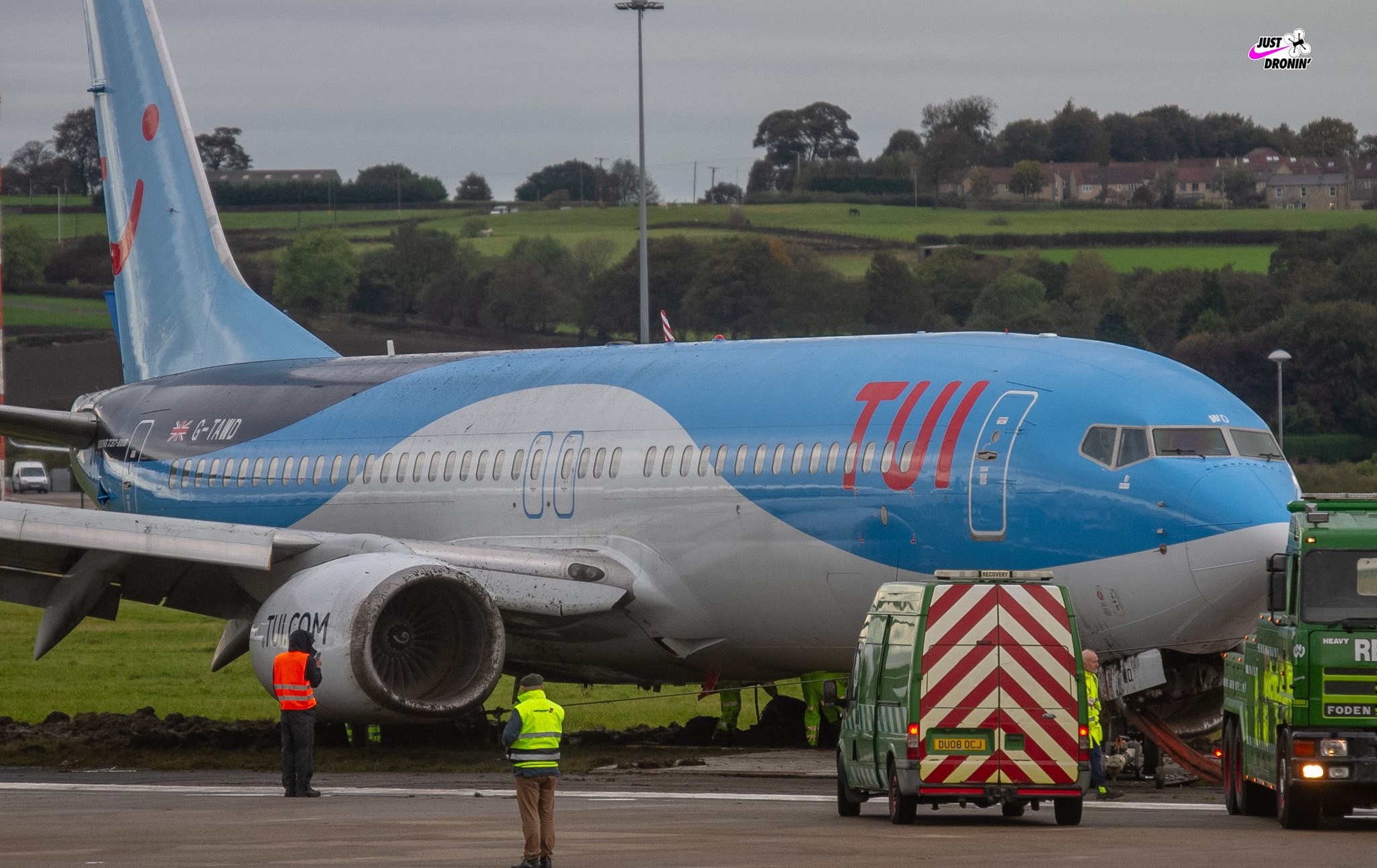


Before the Runway excursion, a TUI passenger plane suffered failure of nosewheel bearings, followed by skidding off the runway at Leeds Bradford Airport during Storm Babet, as per an official report.
The Tui Boeing plane, operating flight BY3551 from Corfu, was landing at the airport in heavy rain when it came off the runway and came to a stop on grass on 20 October 2023.
All 195 passengers and crew were unharmed, but the airport closed while investigations were carried out. Now a report published today (Thursday, October 24) by the Air Accident Investigation Branch (AAIB) found one of the aircraft's nosewheel bearings suffered a "catastrophic failure" which resulted in the plane "juddering" as it was on the landing roll.
After touching down at Leeds Bradford Airport (LBA) in stormy weather, the Boeing B737NG aircraft began to yaw left of the runway centreline. When the pilot flying increased the right rudder input to correct the deviation, both pilots reported feeling a significant judder from the nose gear.
This prompted the pilot flying to reduce the right rudder input and, although there were repeated brief right pedal inputs, the aircraft continued to deviate from the centreline and left the runway. The aircraft sustained minor damage and there were no injuries.
The AAIB report read as,
"Pilots are trained to deal with non-normal and emergency events and the aircraft deviation from the runway centreline may have been considered a challenging situation by the crew."
"There was limited time for the crew to assess the cause of the judder and the practical impact it had on the directional control of the aircraft and surprise or startle may have been a factor."
"However, as the aircraft approached the side of the runway, it is not clear why the [pilot] did not attempt to use all right rudder available, in spite of the judder, to prevent the runway excursion."
The report said the initial phase of the landing was normal, with the aircraft touching down and decelerating properly. But the plane deviated left due to a strong crosswind.
Commenting on the situation, AAIB report confirmed that there was "no mechanical defect" which would have prevented the crew from correcting the problem. AAIB blamed nosewheel juddering as an influence to the incident, it said,
"However, the crew’s actions may have been influenced by the nosewheel juddering," it added.
A spokesperson for Leeds Bradford Airport (LBA) said:
“Our Safety & Compliance team worked closely with the Air Accidents Investigation Branch (AAIB) following the incident in October last year. While supporting the AAIB, we also took the opportunity to conduct our own internal investigation to review our emergency response processes and procedures."
“We were satisfied that the conclusions presented in the AAIB bulletin issued on October 24 and the outcomes reached in relation to the airport mirrored the outcomes of our own investigation."
Display Picture Courtesy : mark dobson
You may like to read.....
